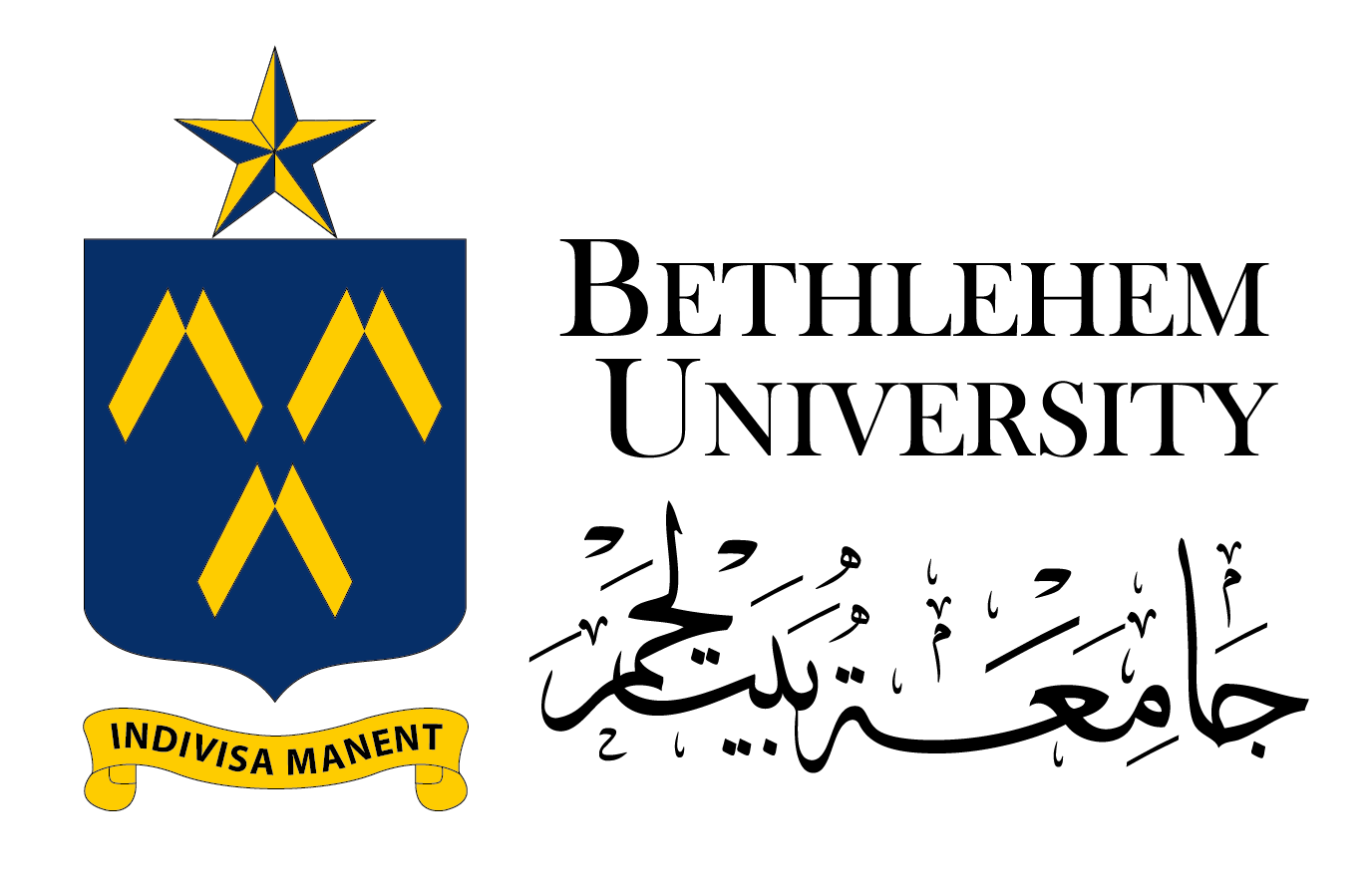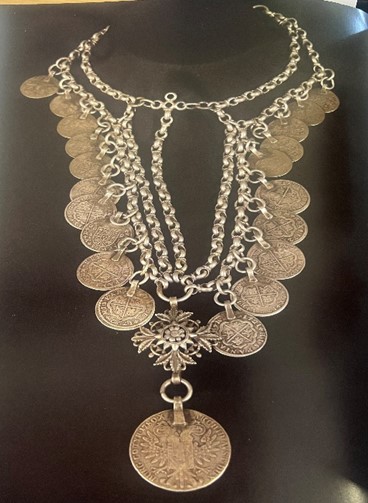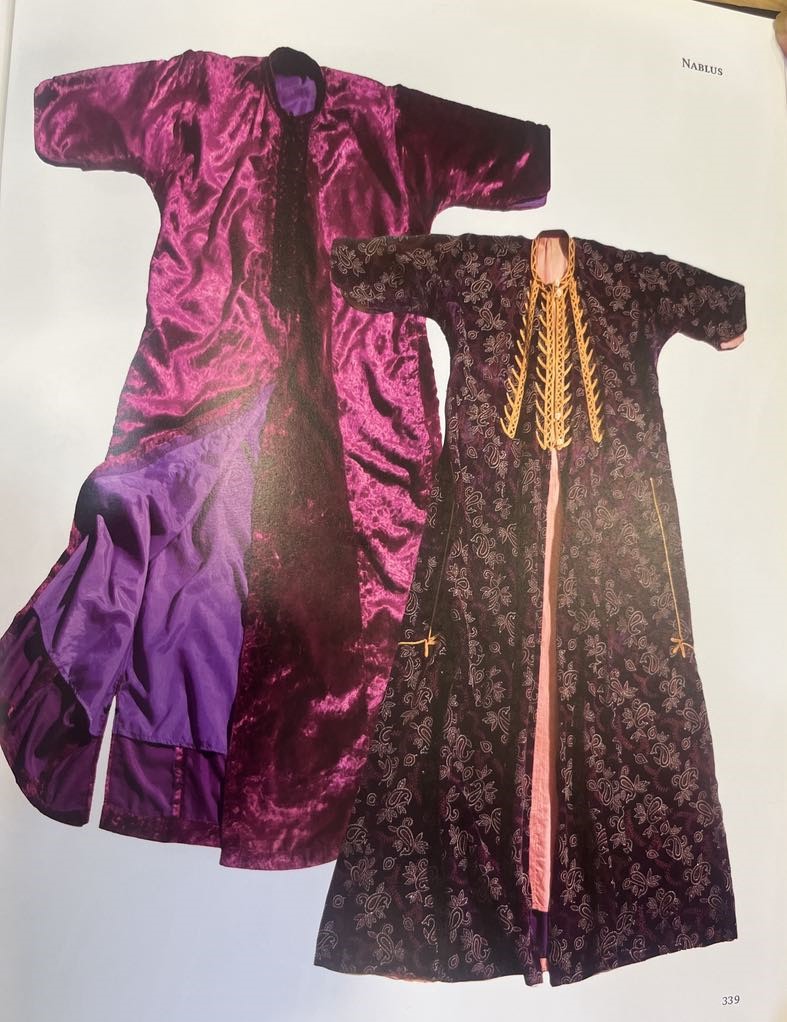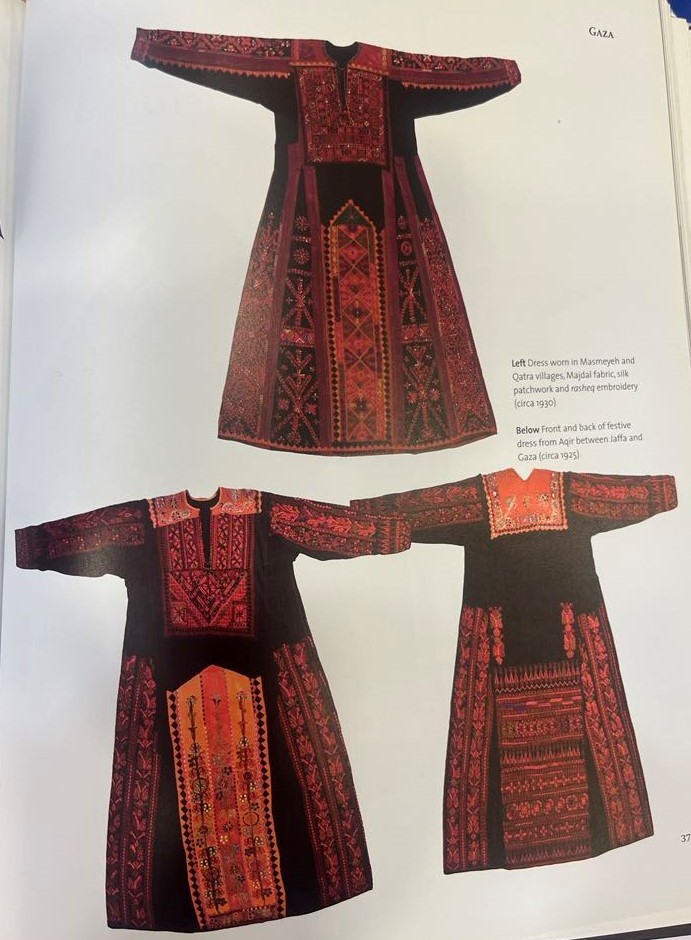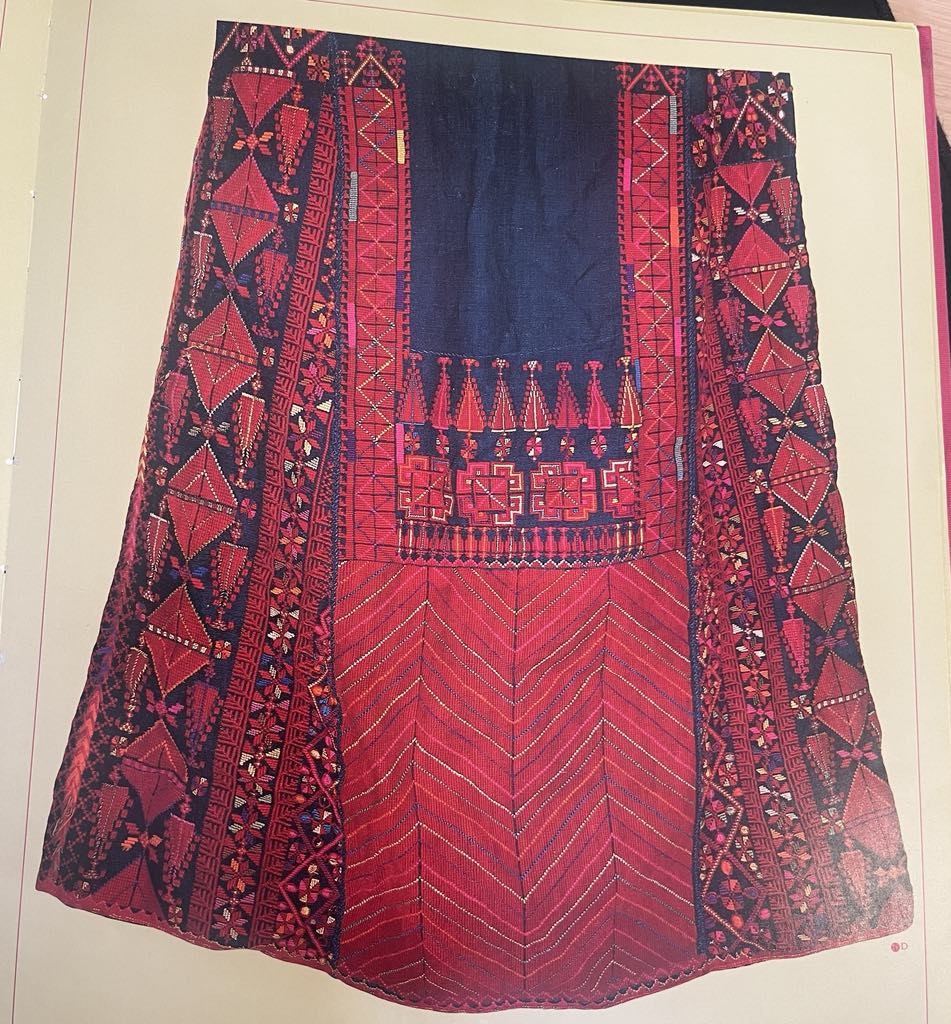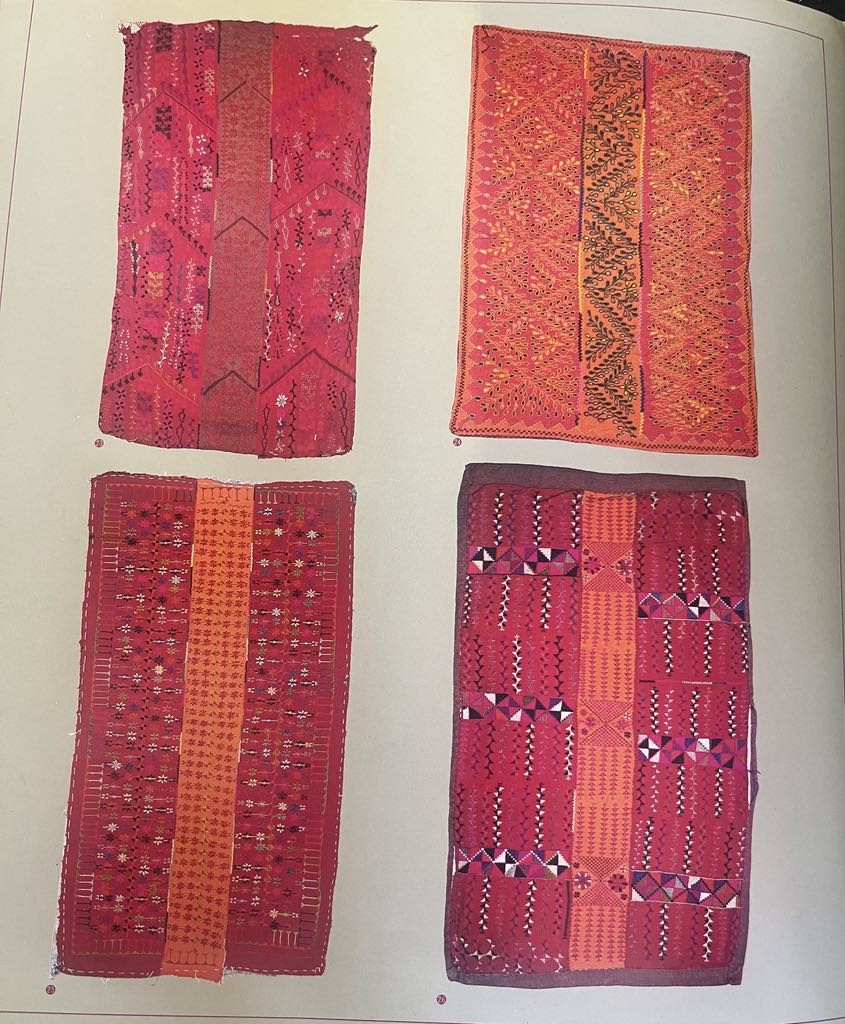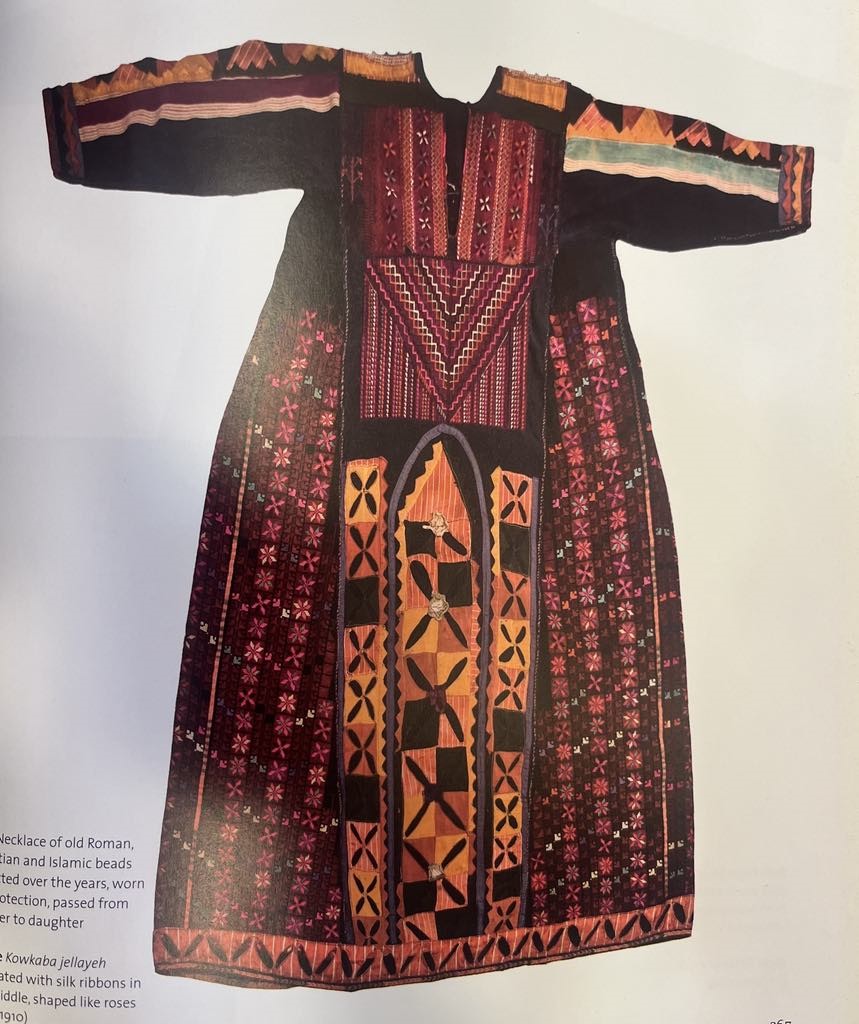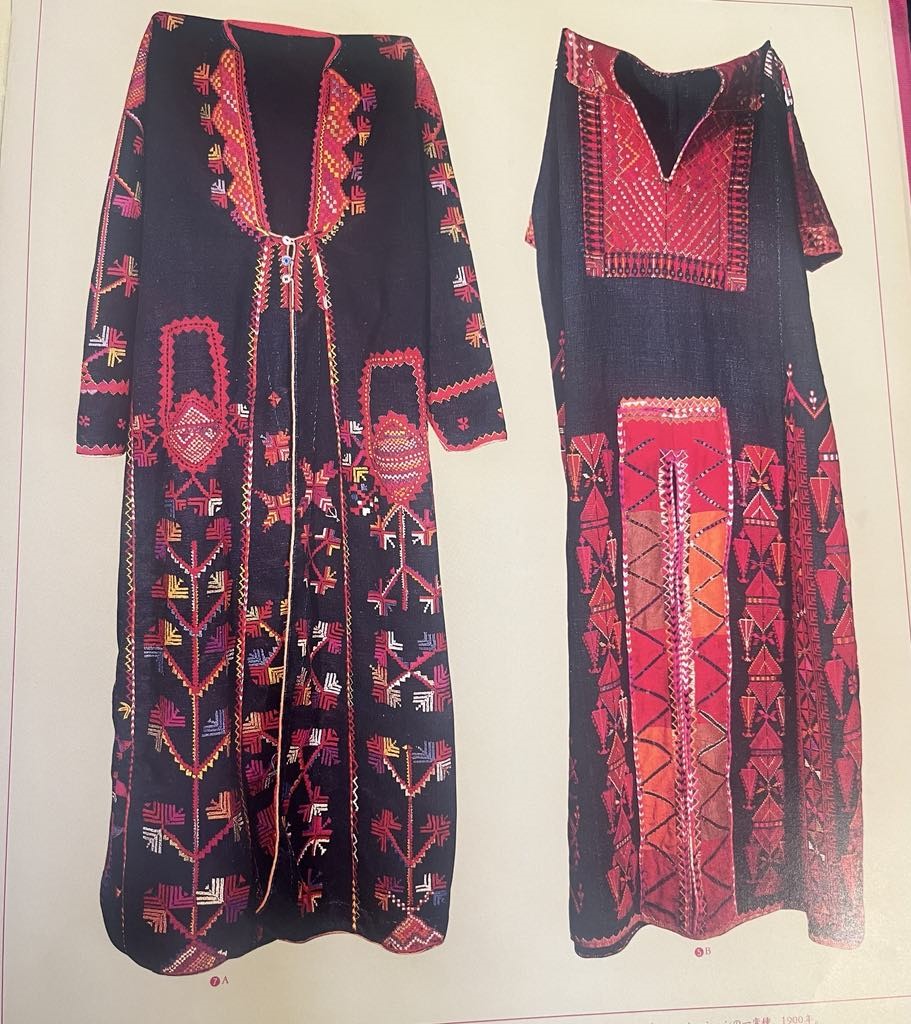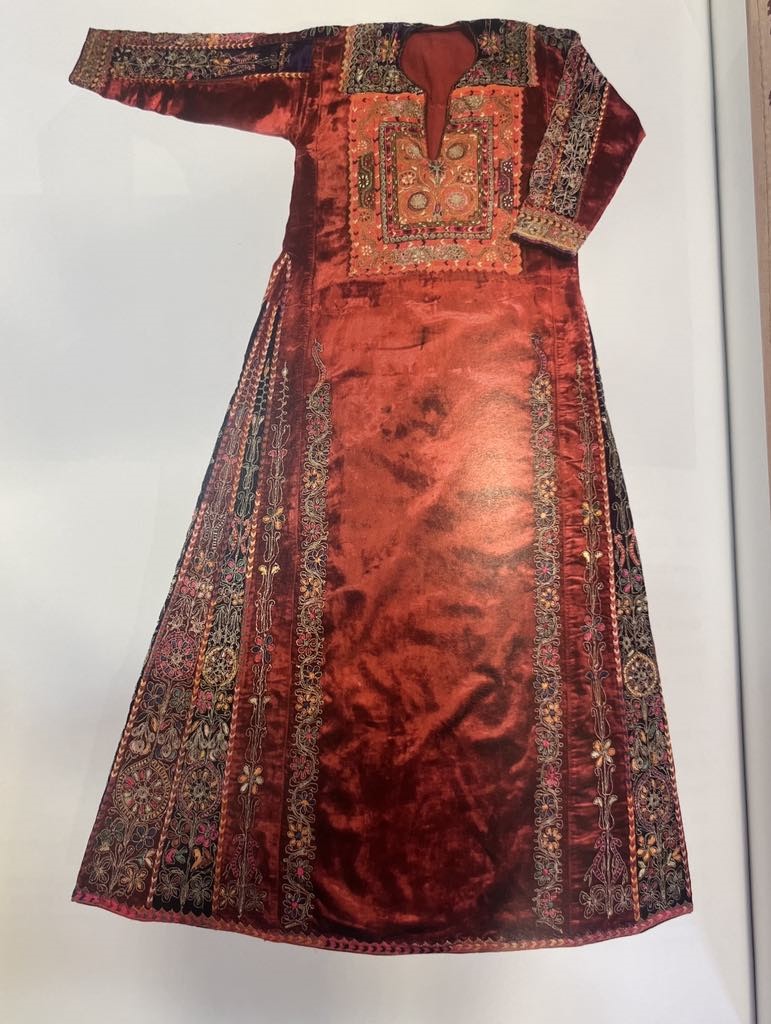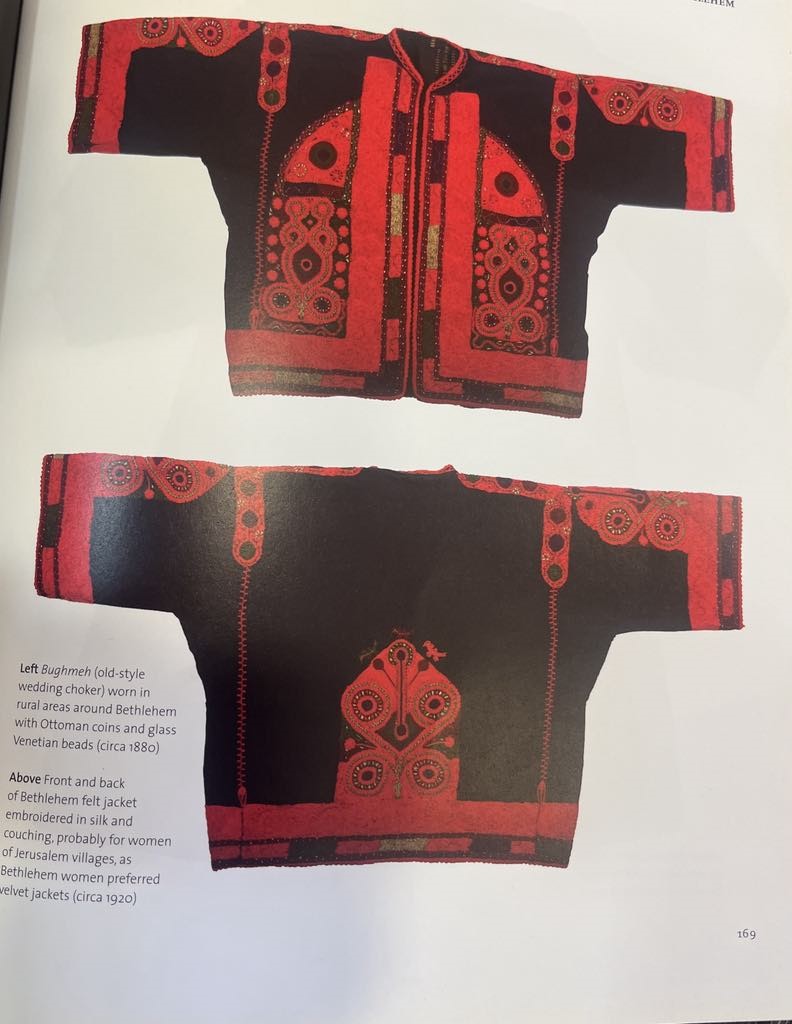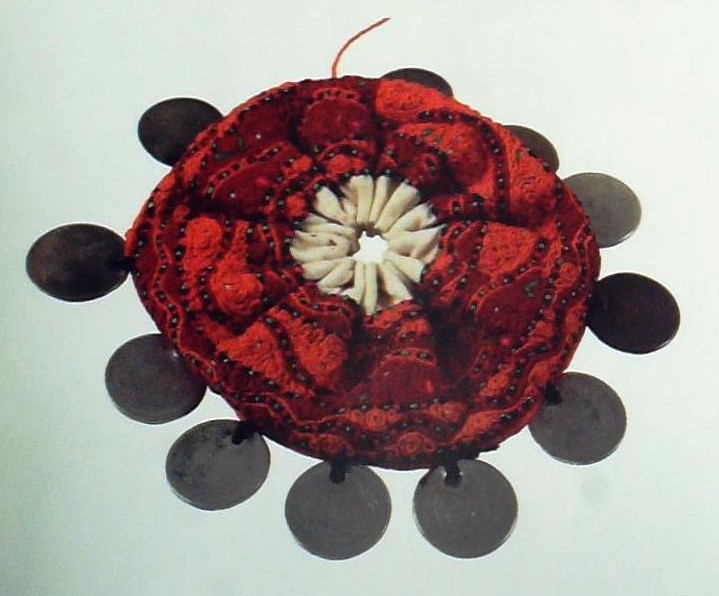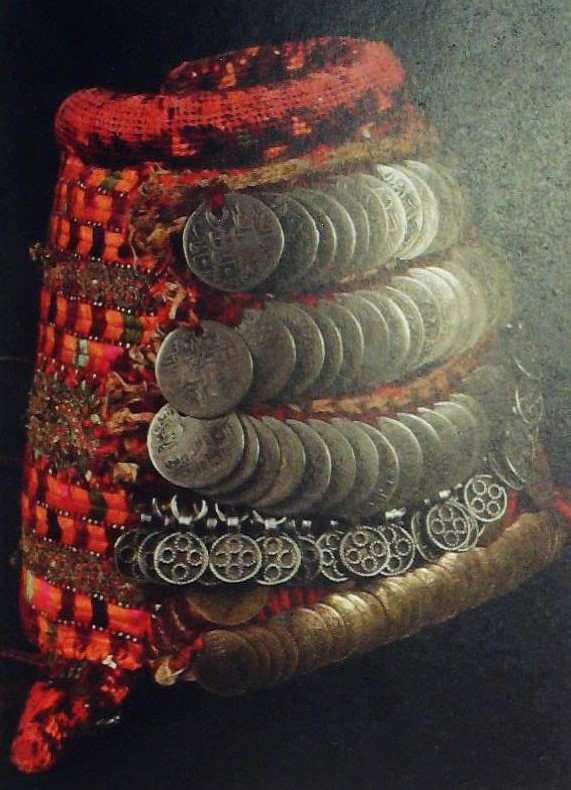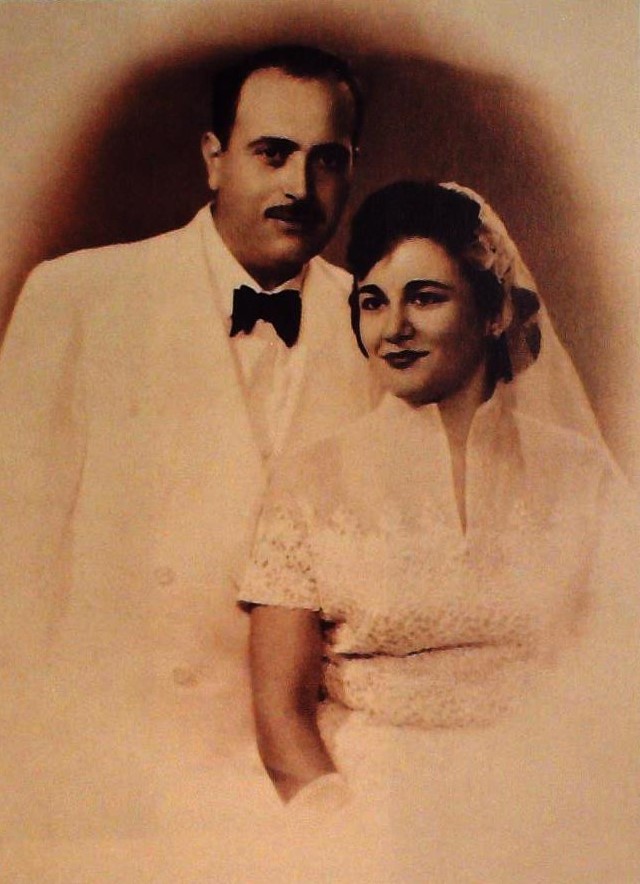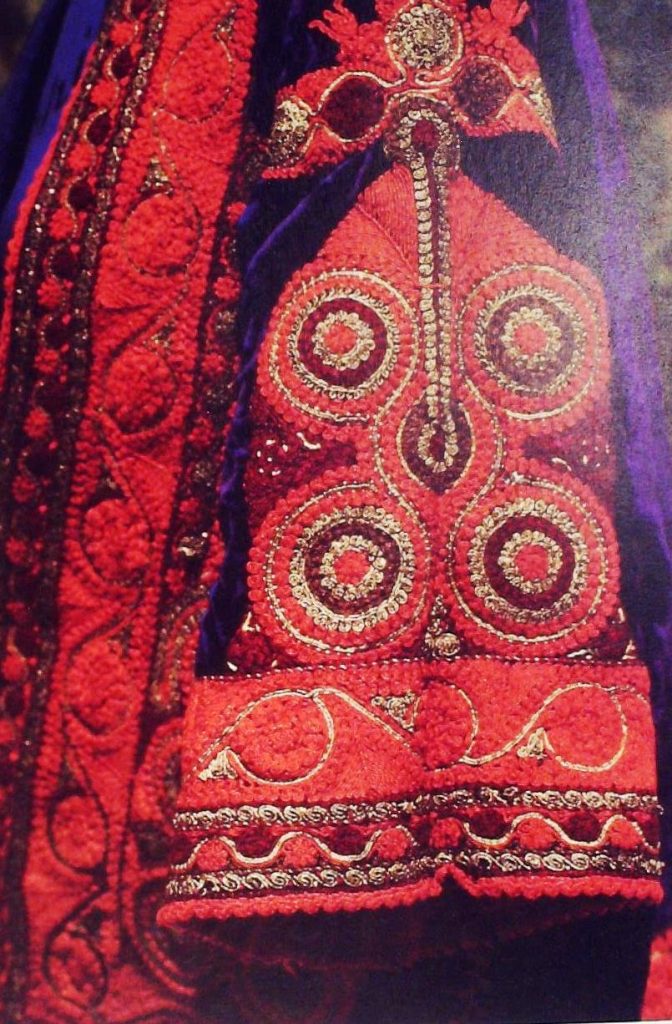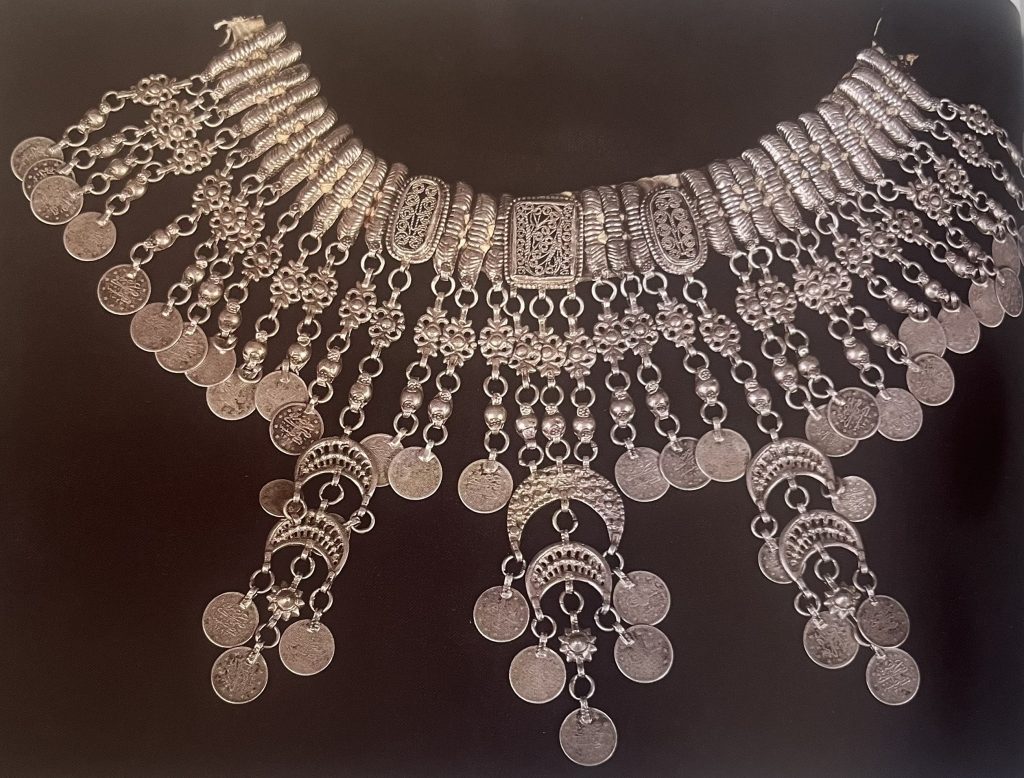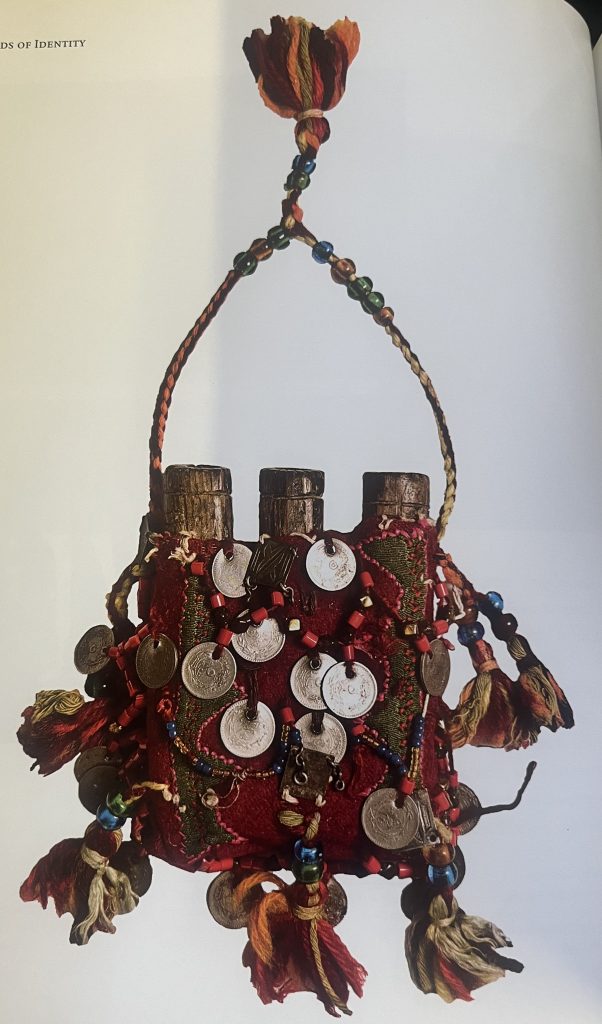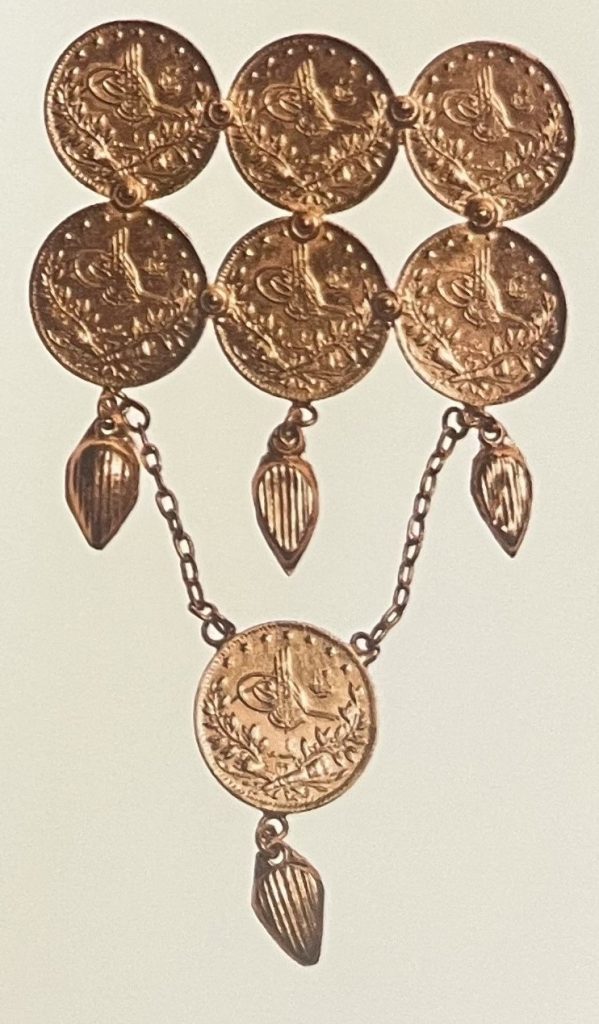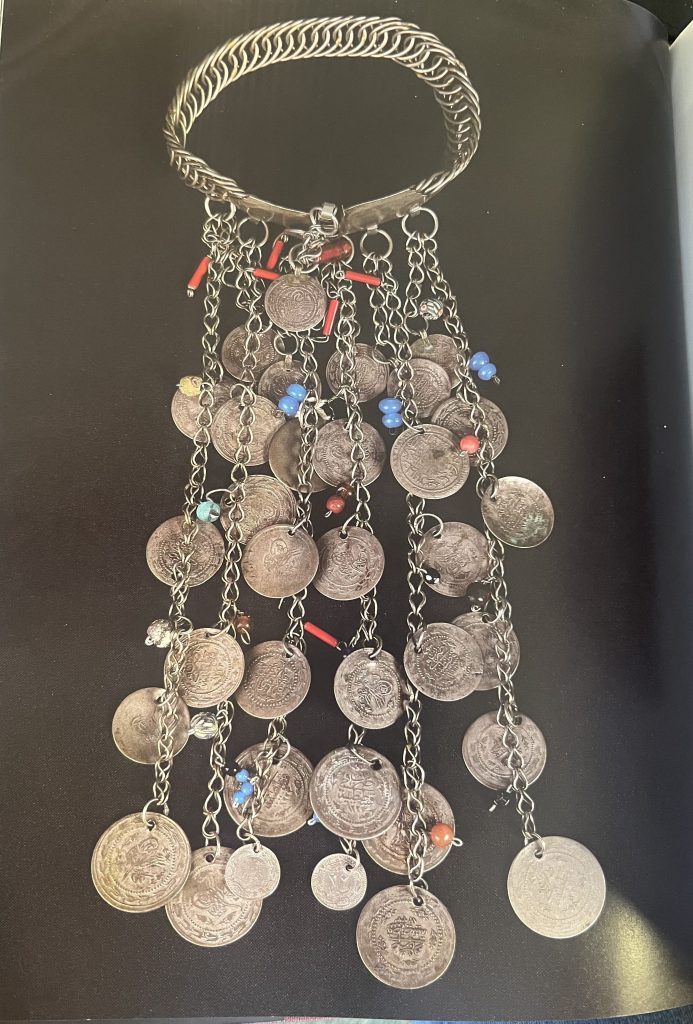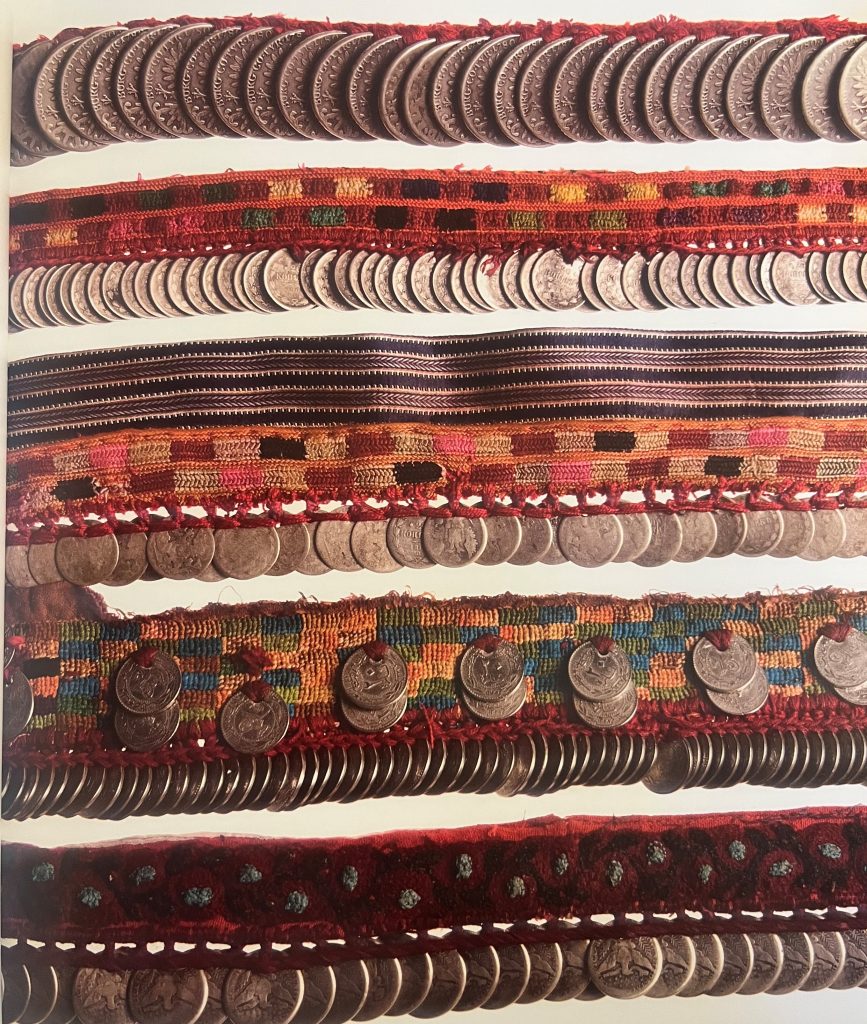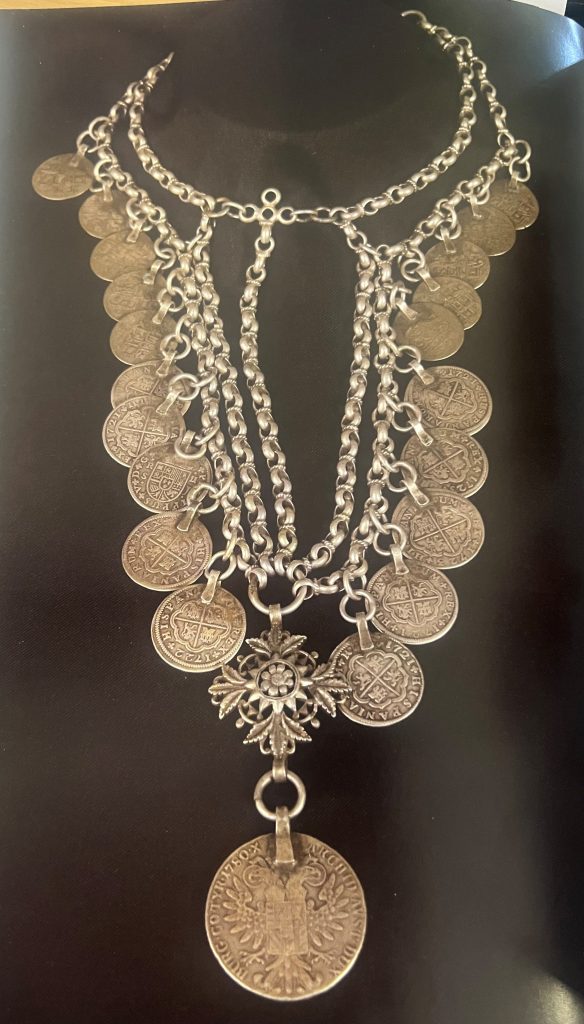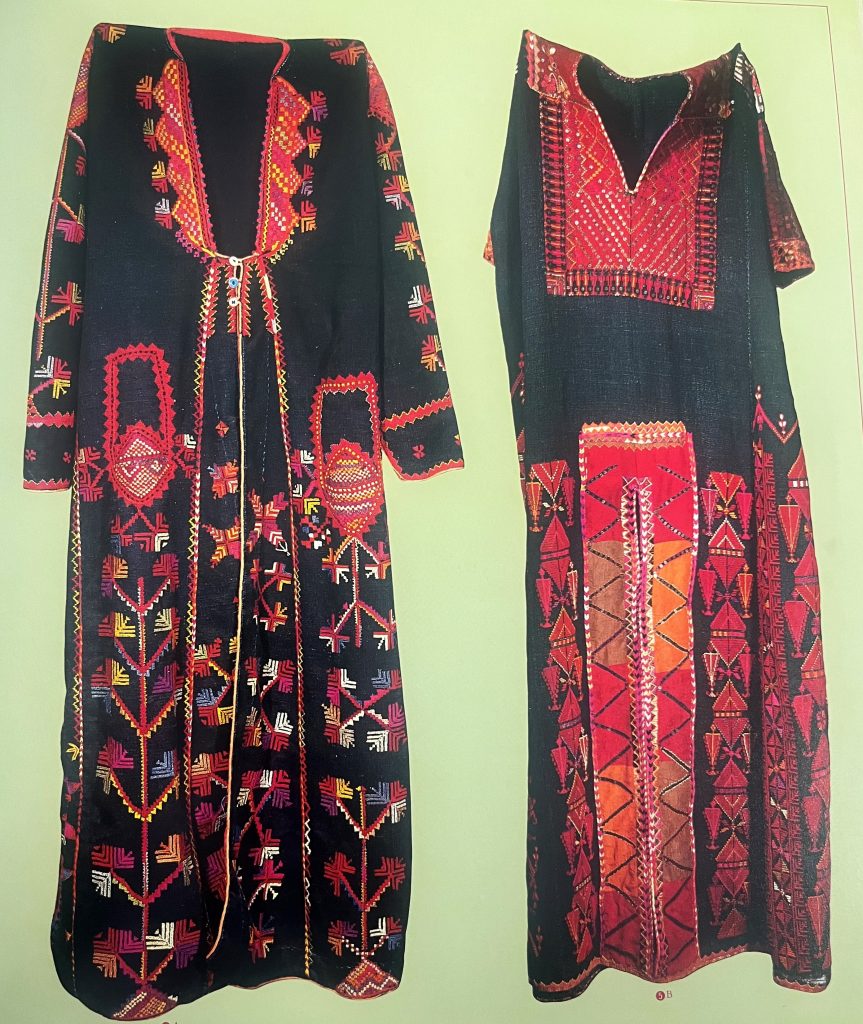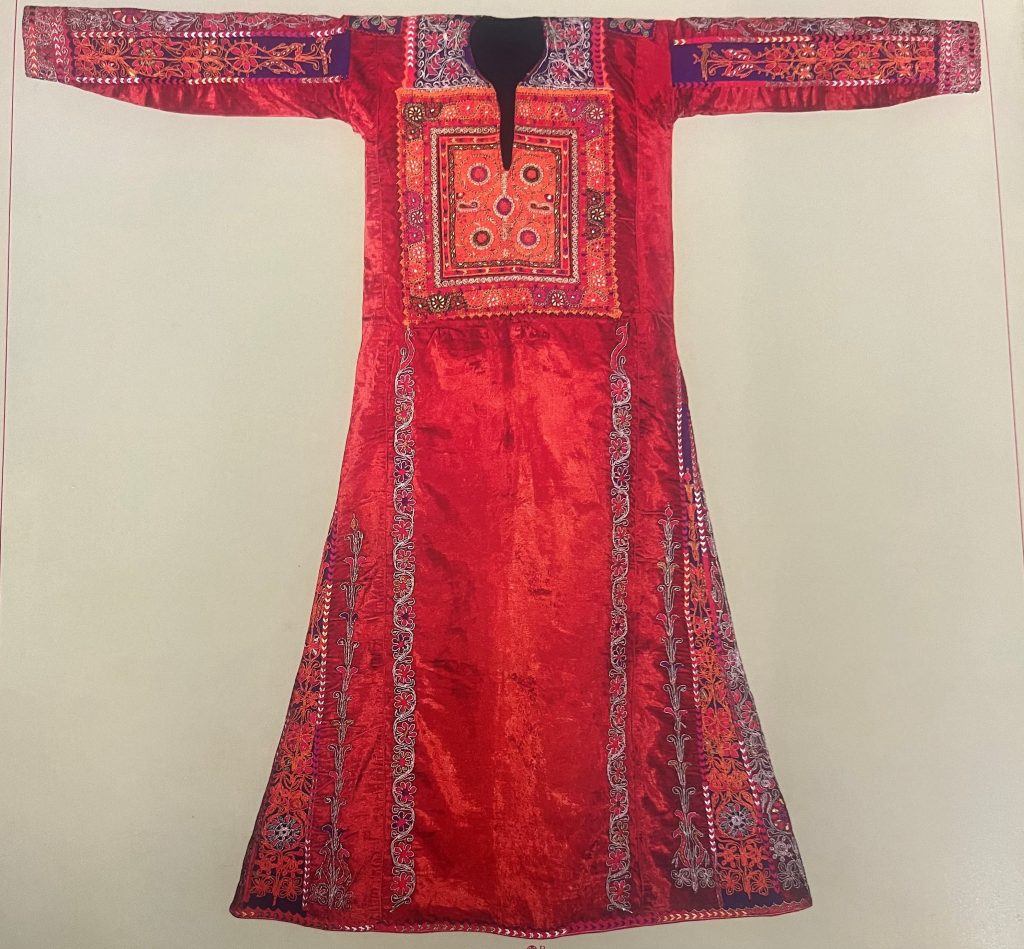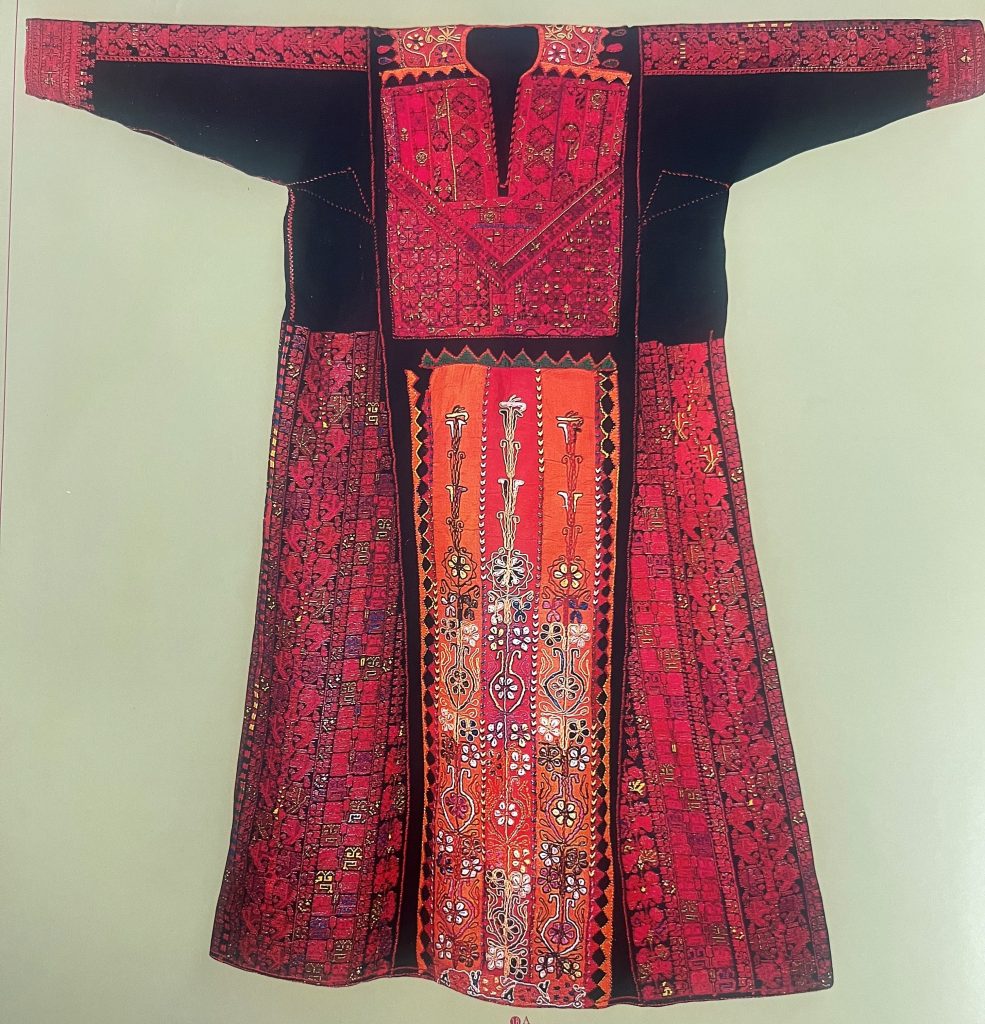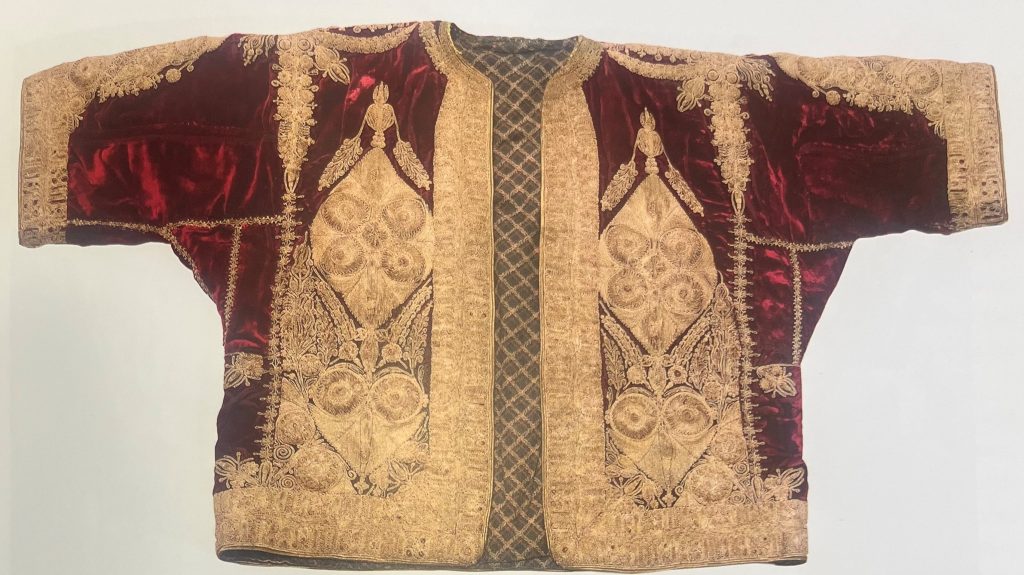Widad Kawar, often referred to as the “Mother of Heritage,” is a Palestinian art historian and collector deeply committed to preserving Palestinian and Jordanian ethnic and cultural arts. Born in 1931 in Tulkarm city, she was the only daughter among five siblings in a Palestinian Christian family. Widad’s family relocated from Tulkarem to Brummana in Beirut before settling in Bethlehem in 1941. Her formative years were spent at the Ramallah Quaker School, where she developed a profound appreciation for her Palestinian heritage. Vacations in Aboud in the Ramallah area, her mother’s village, provided glimpses into the rich tapestry of Palestinian village life during the 1940s, leaving an indelible mark on her young mind.
Her journey into collecting began in the village of Aboud, where a relative gifted her two thobs, one dating back to the 1800s and the other a bridal dress called a tubsi. Initially interested in textiles and jewelry, she could not have foreseen that these gifts would mark the inception of what is now the largest existing collection of Palestinian and Jordanian traditional costumes.
Ramallah and Bethlehem, both considered significant cultural heritage centers in Palestine, had a tremendous impact on Widad as a young girl. Her early exploration of Bethlehem revealed its significance as a fashion and weaving hub for numerous villages across the region. Embroidery centers in the market, overseen by renowned artisans like Jamila Hazboun Mahyoub and Im Barhum, among others, fostered vibrant competition for producing the finest embroidered products. Every city and town held a weekly market day, such as Bethlehem’s bustling Saturday market, where women from surrounding villages showcased their finest attire. This market offered everything necessary for village costumes, from fabrics and threads to meticulously crafted embroidery made by Bethlehem’s skilled women.
The years marked by the wars and occupation of 1948 and 1967 led to the destruction of countless villages and the displacement of many Palestinians. In response, collecting traditional costumes became Widad’s way of preserving a beloved culture. She pursued advanced studies at the American University of Beirut, further enriching her understanding of cultural heritage and paving the way for her influential career.
Following her marriage to Kamel Kawar, Widad relocated to Amman, where she nurtured a growing family while pursuing her own professional endeavors. From her home in Amman, Widad served as a catalyst for the preservation and evolution of Arabic dress as an art form, extending her influence far beyond the Arab region. An open door to aspiring writers, journalists, researchers, and museum curators, her residence has long been a hub for cultural exchange and learning, housing her extensive collection for many years.
Widad’s commitment to showcasing the beauty and significance of Arab textile heritage has led her to organize exhibitions and publish works spanning multiple continents, from Bahrain to the United Kingdom. Her tireless efforts have not gone unnoticed, earning her accolades from the Jordanian government and the prestigious Prince Claus International Award for Culture and Development, recognizing her exceptional contributions to safeguarding global cultural heritage.
Tiraz houses the most comprehensive collection of Palestinian, Jordanian, and other Arab costumes from the 19th and 20th centuries, boasting over 2000 costumes and weavings. As a Jordan-based institution, Tiraz is dedicated to preserving the Widad Kawar Collection and promoting the rich cultural heritage and living traditions of Palestinians, Jordanians, and Arabs at large. When you’re in Jordan, make sure to include a visit to Tiraz in your itinerary to immerse yourself in this vibrant cultural experience.
Books authored by Mrs. Kawar are listed below and can be found in our library. Some Mrs. Kawar donated to our library:
Bethlehem from golden threads to cement blocks
Threads of Identity
Costumes dyed by the sun
Palestinian Embroidery Motifs
People from Bethlehem
The collection below is found in her museum
